Two University of Regina grads set out to conquer an epic outdoor challenge. Traversing scree-draped ridgelines and craggy outcrops, they discovered that facing one of the most demanding tests of stamina and spirit rekindled a friendship that has endured for 45 years.
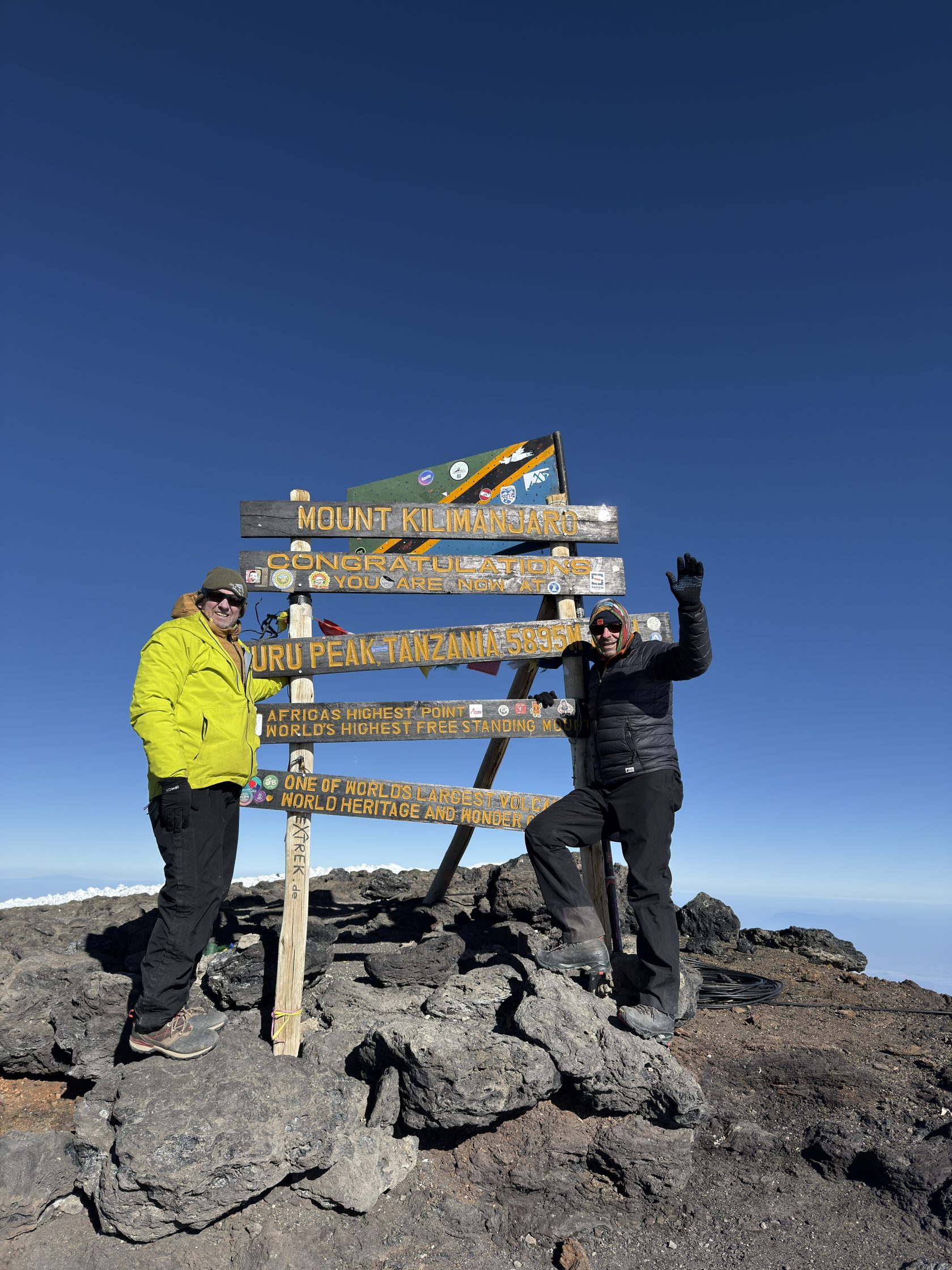
This wasn’t brought on by some life crisis – not mid, late, or otherwise. It wasn’t about mortality, regret, or checking off an item on a dusty old bucket list.
It was 4:30 a.m. and I had been stumbling through the coal-dark night for the better part of five hours. It would be another four hours until we would reach our much-anticipated destination – a weather-beaten sign, post-holed into the ice and volcanic rubble at 5,895 metres above sea level, at the top of the highest free-standing mountain in the world, the summit of Mount Kilimanjaro in Tanzania.
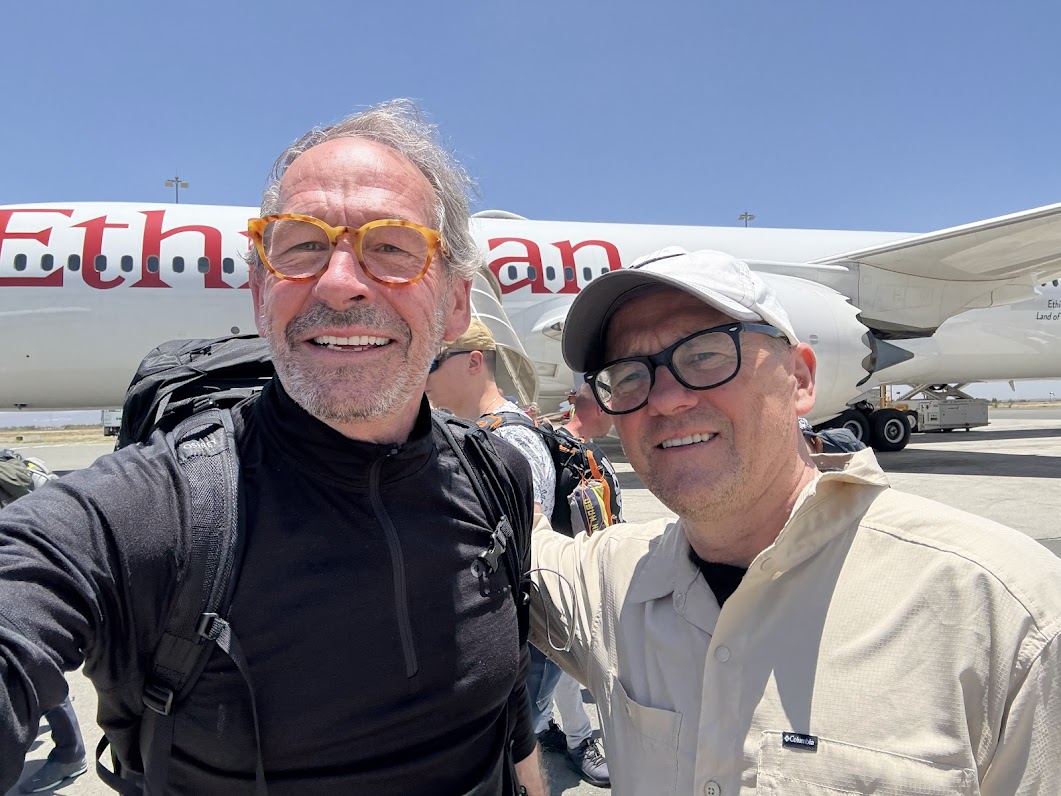
I’ve always been drawn to wild places. Family vacations were spent riding horseback throughout the eastern slopes of the Canadian Rockies. I canoed the Nahanni River that winds through the remote Northwest Territories wilderness. I hiked the rugged West Coast Trail. I’ve pitched tents in Saskatchewan’s boreal forest and paddled the inlets and bays near Tofino B.C. in my cedar-strip kayak.
The day before I turned 60, I stood on the South Rim of the Grand Canyon and started the 10-kilometre descent down the South Kaibab Trail to the Colorado River. The next morning, I hiked up the 12-kilometre Bright Angel Trail in five and a half hours and celebrated with a double cheeseburger and a firm promise that I’d never do anything like that again.
Then Kilimanjaro set up camp in my brain.
So, Kilimanjaro, I resolved, would be my swan song. Not a pilgrimage, not a quest, but an exclamation mark. A walkabout to punctuate a lifetime of outdoor pursuits before arthritis sets in and excuses become easier than effort.
This grand undertaking started impulsively on February 29, 2024 – my 16th birthday thanks to the quirks of the Gregorian calendar. I dropped a down payment on a trek with a British outfit called Kandoo Adventures, which boasted a 97% success rate on its website which featured a lot of smiling hikers and not a single photo of a helicopter evacuating the weak and defeated.
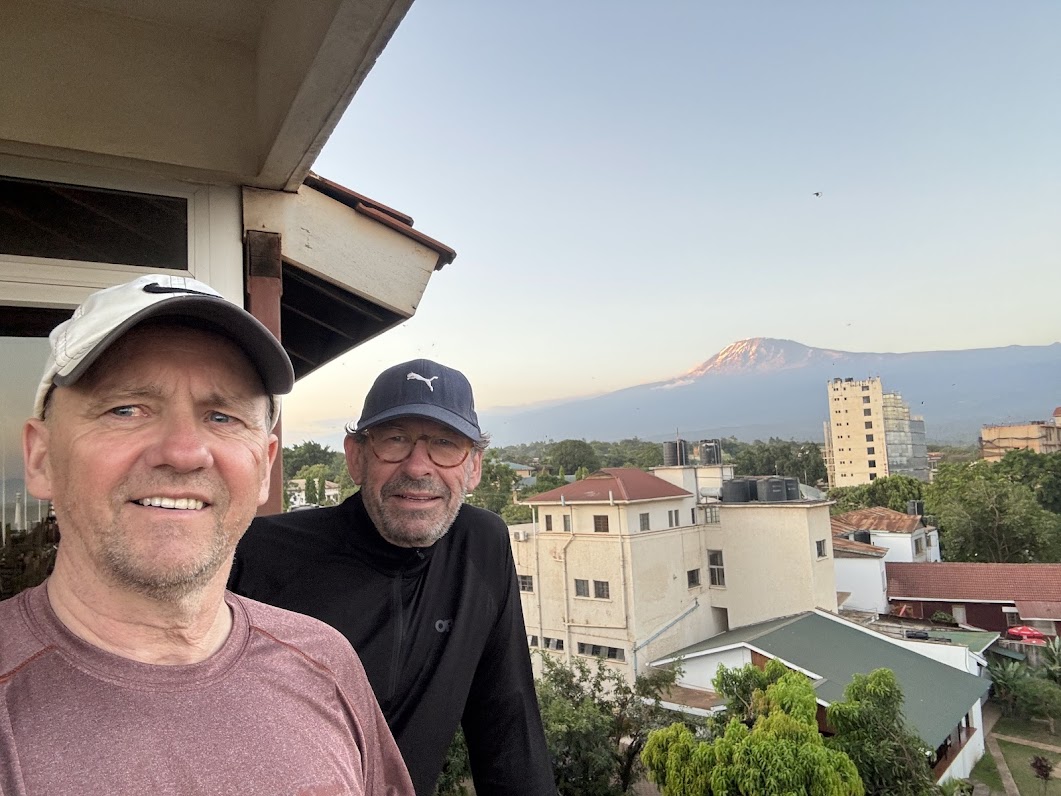
On that same day, I got my first tattoo – carpe diem – on my left bicep.
Seize the day indeed.
My obsessive research began. I read everything I could get my eyes on about Kili. Blogs, forums, and guidebooks. I watched scores of YouTube videos narrated by cheerful Australians and grim-faced Germans.
Kilimanjaro isn’t a technical climb – there’s no need for ropes, ice axes, or crampons on the mountain. But it is a trudge, a struggle, a grind. And then there’s summit night.
What you need to succeed on Kilimanjaro is adequate fitness, a resolute mind, patience, and a willingness to suffer quietly. I read about 12-year-olds who summited. Octogenarians who crossed the mountain off their to-do lists. There was even a guy who carried a fridge strapped to his back to the top.
If they could do it, I figured I had a decent shot.
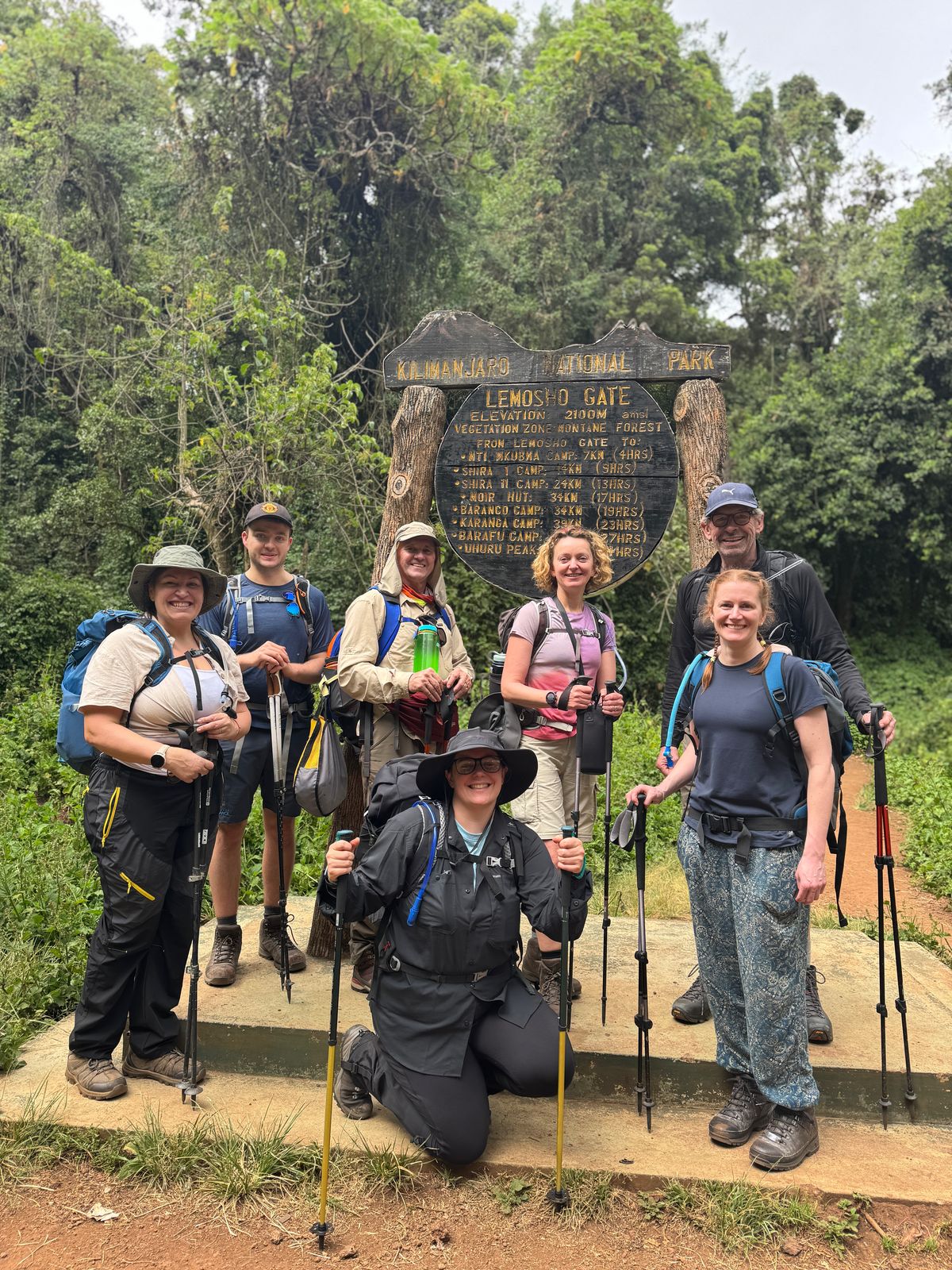
There are eight routes up Kilimanjaro that take anywhere from five to eleven days to complete. Because proper acclimatization is critical to success, I chose the Lemosho eight-day trek. The route is recognized for its beauty, diverse landscapes, exceptional acclimatization, and high success rate.
Beginning on Kilimanjaro’s western flank, the Lemosho route ascends through four distinct climate zones: rainforest, moorland, alpine desert, and finally, the arctic summit zone. Trekkers navigate the Shira Plateau and climb the dramatic Barranco Wall, two of the route’s topographical highlights.
First day hiking through Kilimanjaro's rainforest.
In anticipation of the trek, I ramped up my training, bought additional gear (that I may or may not need), and continued my relentless research.
But one troubling detail kept nagging at my game plan – I didn’t want to do this one solo.
In 2019, I had attempted the 22-km Berg Lake Trail in B.C. alone. Eleven kilometres in, rain soaked, and in a mood most foul, I turned around and walked out. It’s a decision I came to regret.
Approaching the moorlands, the second of Kilimanjaro's climate zones.
I did not want to tap out on Kilimanjaro. But who could I turn to for encouragement and companionship on such an ambitious journey with so little notice?
Then it struck me. Marcel.
Marcel Asselin BEd’86 and I met in 1980, when we played on the same U of R intramural hockey team. He was a talented, intense, two-way player whose deft scoring made up for the mediocre goaltending that I brought to the rink.
Marcel is from Ste-Marie Beauce, Quebec, some 60 kilometres southeast of Quebec City. He enrolled in the English as a Second Language program at the University to expand his horizons and force himself outside of his comfort zone. When he arrived on the prairies, he spoke little English. But he brought with him a U-Haul trailer worth of dogged determination and stick-to-itiveness that served him well living in a new city and learning a new language. That perseverance would prove equally valuable 45 years later when an old pal invited him on the adventure of a lifetime.
The members of InZania hike the alpine desert, closing in on their goal of summiting the roof of Africa.
Marcel and I had drifted in and out of each other’s lives after we graduated from the U of R. He earned an education degree and went on to a long teaching career while I embarked on short-lived career in film production before returning to the University to complete a journalism degree.
Still, we managed to stay in touch, whether by design or chance.
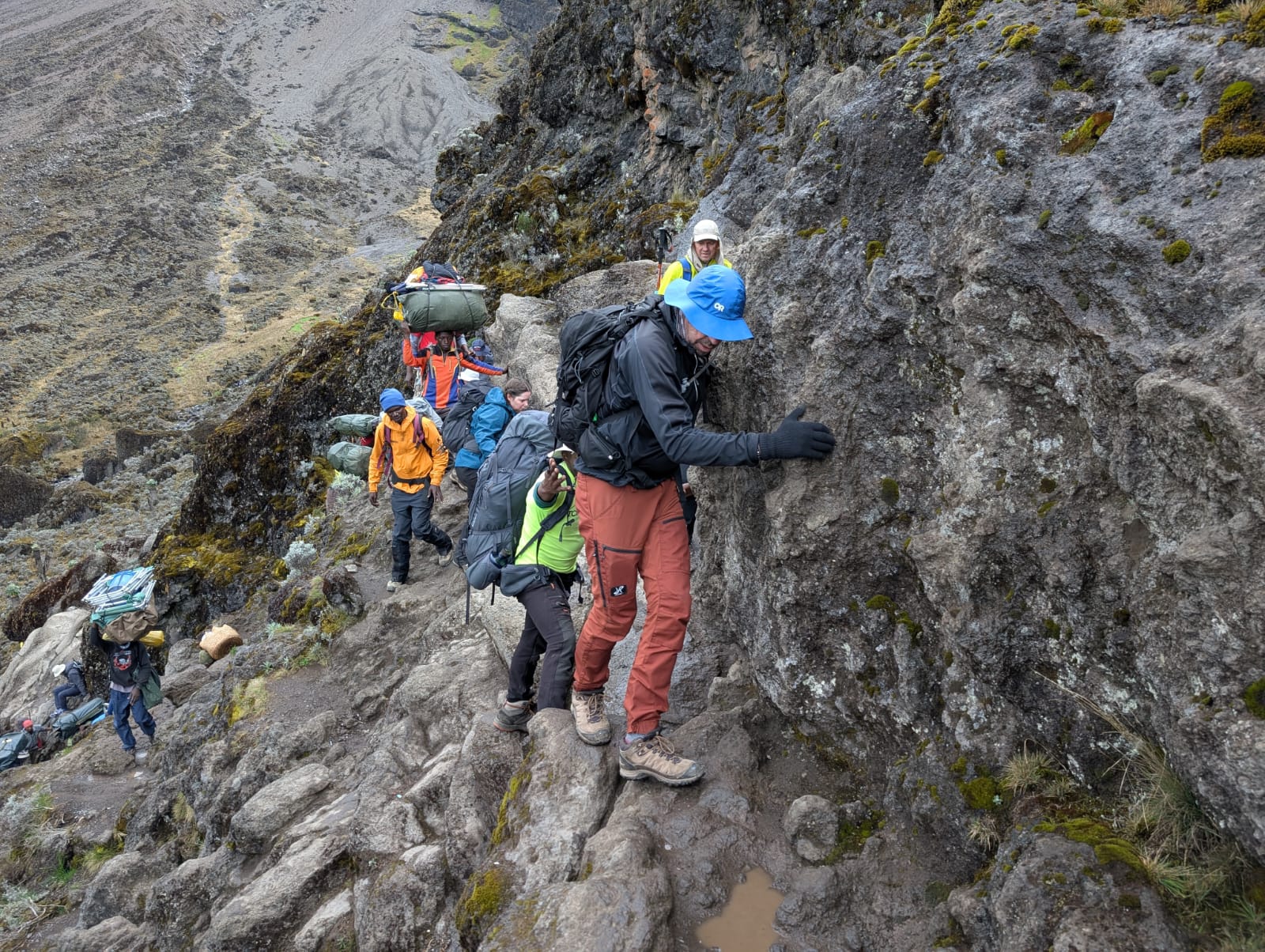
We hiked the West Coast Trail in the early '90s. Cycled B.C.’s Gulf Islands. I photographed his wedding in 1997. We played together in the over 35 division in the Adult Safe hockey league – which ironically, was neither safe nor particularly adult.
Years passed. Our kids grew. We ran into each other now and then – at our daughters’ volleyball tournaments and in grocery stores. Then, about four years ago, we reconnected meaningfully and caught up on the time that had slipped between us. Some friendships are like good whiskey and cast-iron skillets – they better with age.
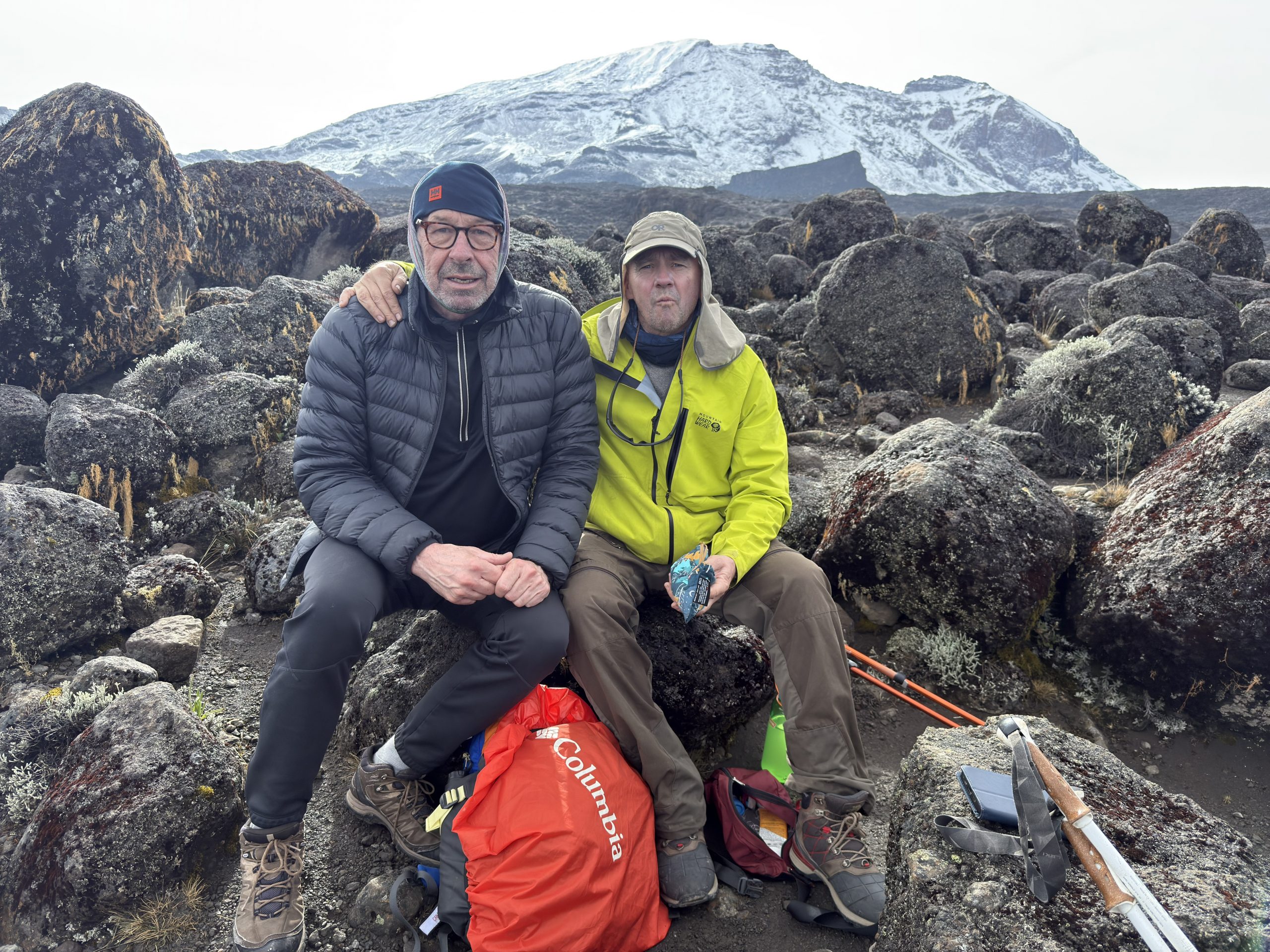
Now, with both of us in the over 60 division, it was time for one last adventure.
I texted him. “Hey – want to climb Kilimanjaro?”
“Let’s talk,” he replied.
I called him and laid out the details I had already set in motion. He said he’d decide within a week.
Ten minutes later he texted: “I’m in.”
Neither of us could know what fate had in store for our odyssey. Success or failure on Kilimanjaro is arbitrary. Whatever the mountain had in mind for us, we’d face it together.
And so, on March 8, 2025, with five other trekkers, Marcel and I began the eight-day ascent of the roof of Africa.
Our group – nicknamed InZania – became our family for just over a week. Hiking an average of five to seven hours-a-day became the routine – our Groundhog Day.
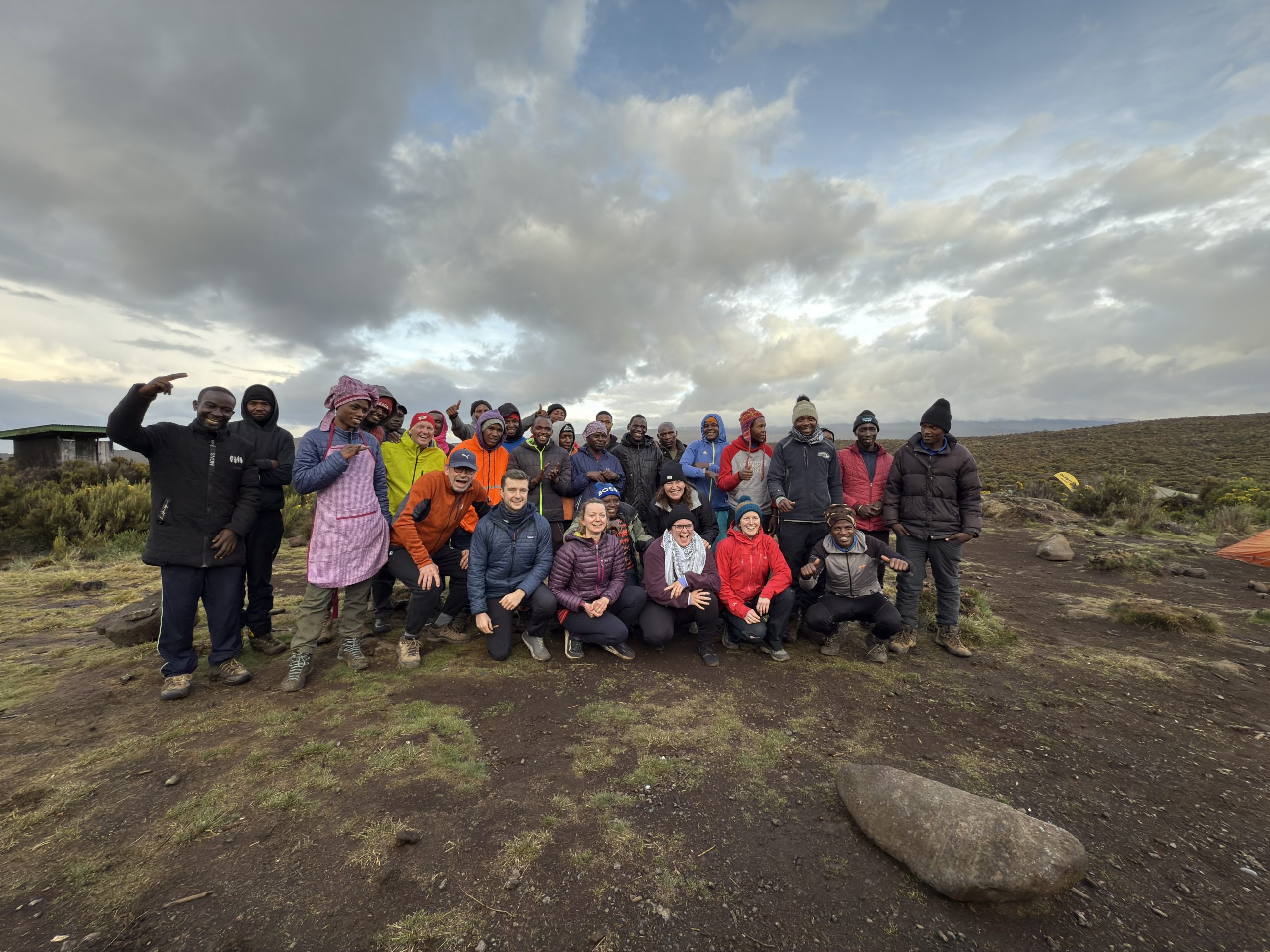
As the days passed, the landscape changed. Rainforest gave way to moorland, then to alpine desert and finally to the arctic summit zone. We walked among towering Dendroseneccio kilimanjari, the prehistoric-looking, pineapple-like plants that only grow on Kilimanjaro. We climbed the dreaded Barranco Wall – which, despite my vivid nightmares, was not the death-defying scramble I’d imagined.
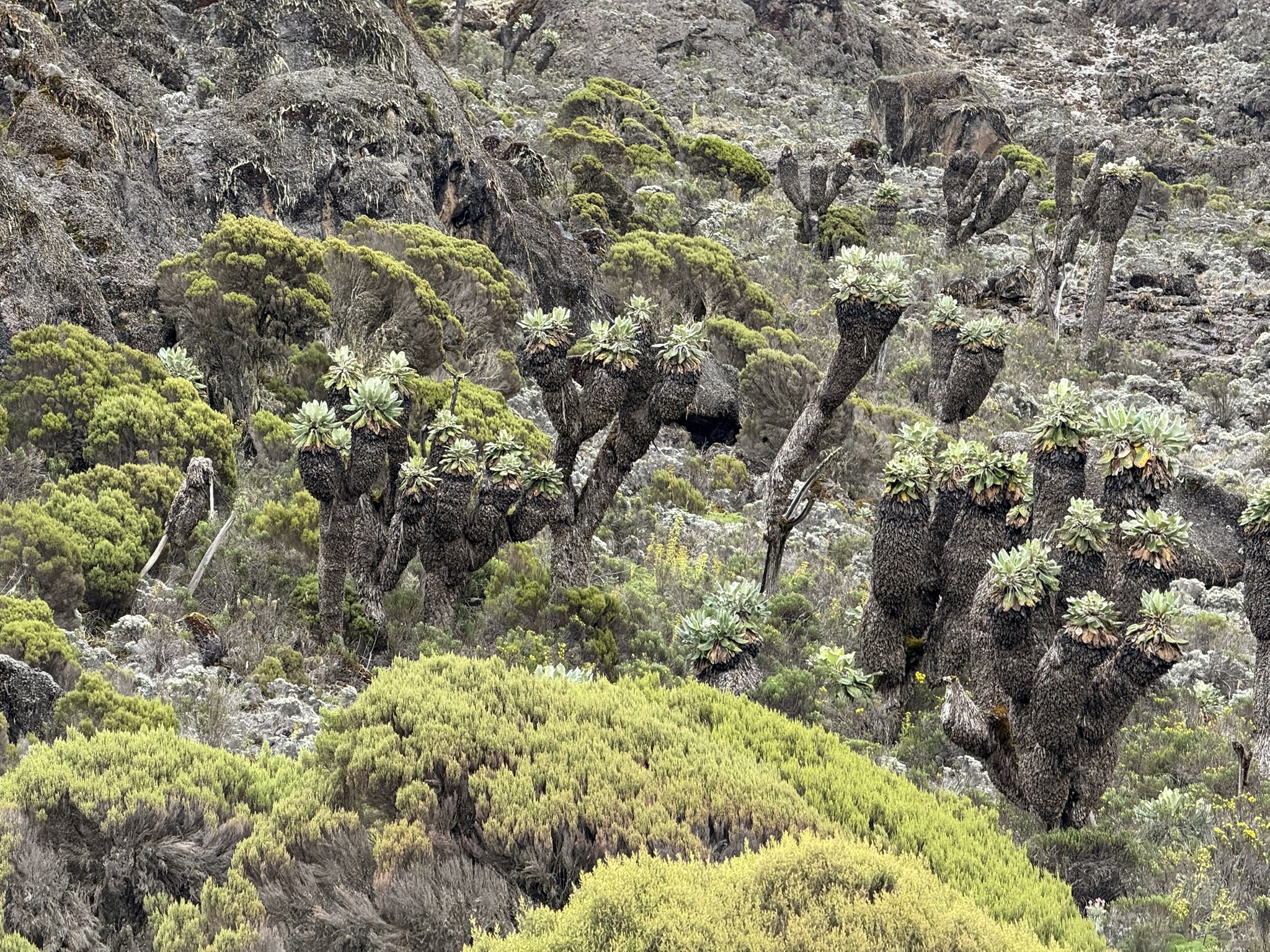
The daily rhythm was simple: wake, eat, hike, rest, repeat. Marcel moved with quiet confidence, rarely showing strain, always entertaining the troop with his tomfoolery. I followed his pace, partly for morale, partly because he seemed the sole trekker among us who truly embraced the Swahili mantra pole, pole – slowly, slowly – the key to success.
Somewhere, in all that trekking, something quietly wonderful happened.
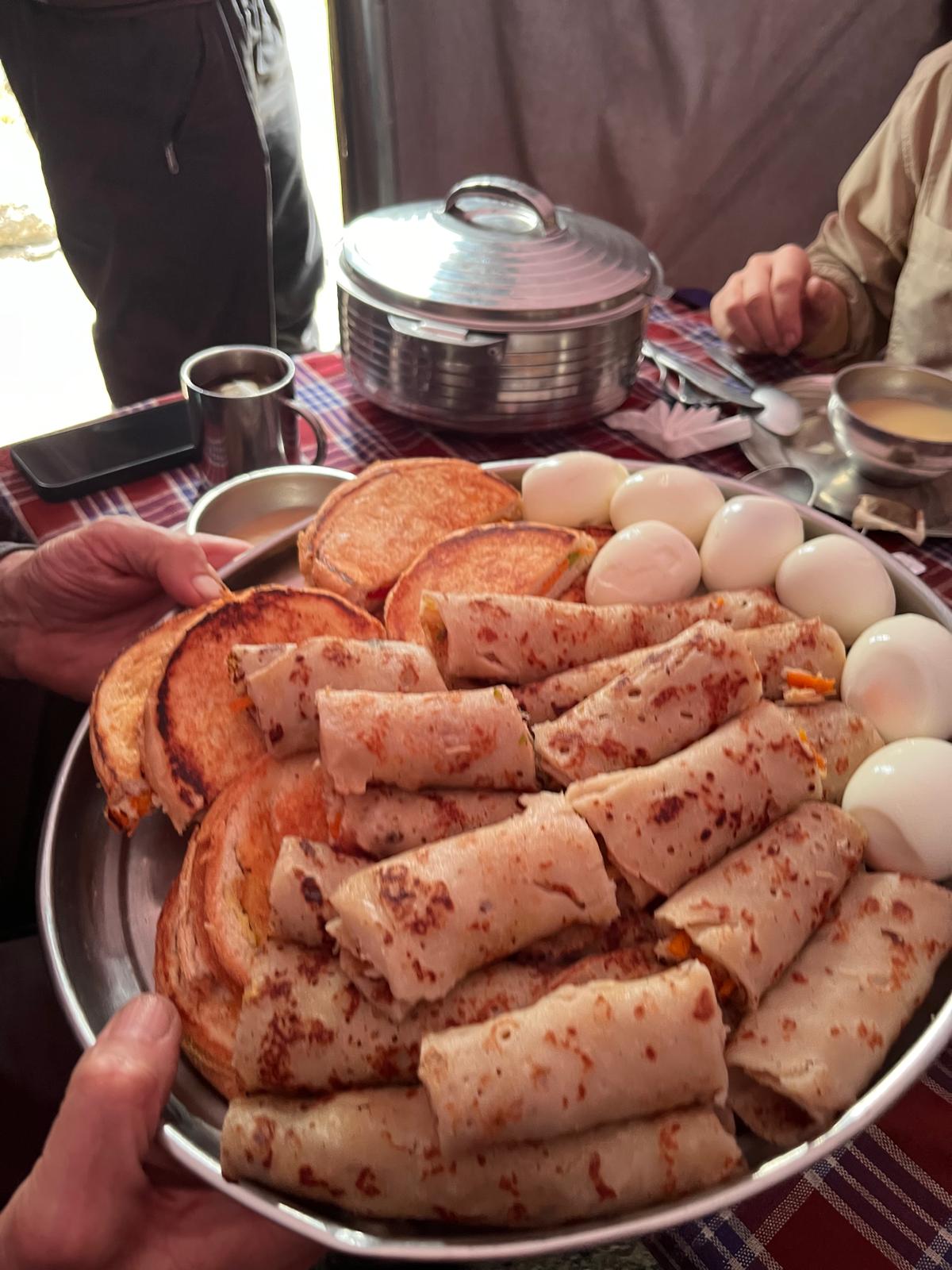
Marcel and I found our rhythm. We fell into step. We talked. About our kids, our work, our hopes, our aches, our lives. We shared trail snacks and offered the kind of encouragement that only long-time friends can deliver – sincere but dripping in sarcasm.
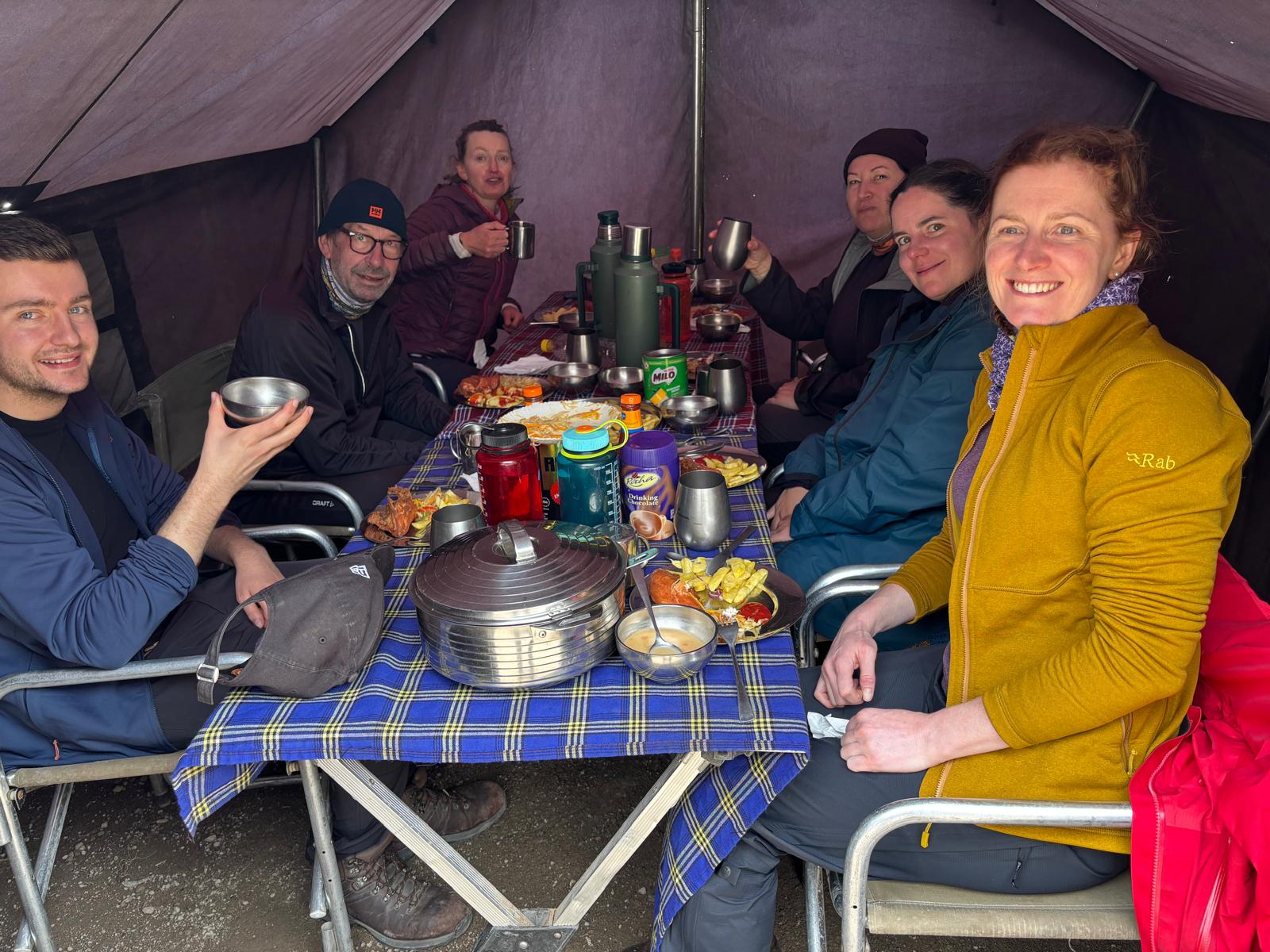
Though the days were excruciatingly demanding, we were not roughing it – au contraire – it was the most luxurious camping I’ve ever experienced.
We had a cook. A dining tent. Real chairs. We ate spaghetti bolognese, pork kabobs, and herb-and-lemon chicken. Each meal began with soup and ended with sweets, including freshly baked cake, on two occasions. We were served eggs – real eggs – at 3,900 metres. We had our own toilet, a little dicey by modern standards, but a welcome convenience on the mountain, nonetheless.
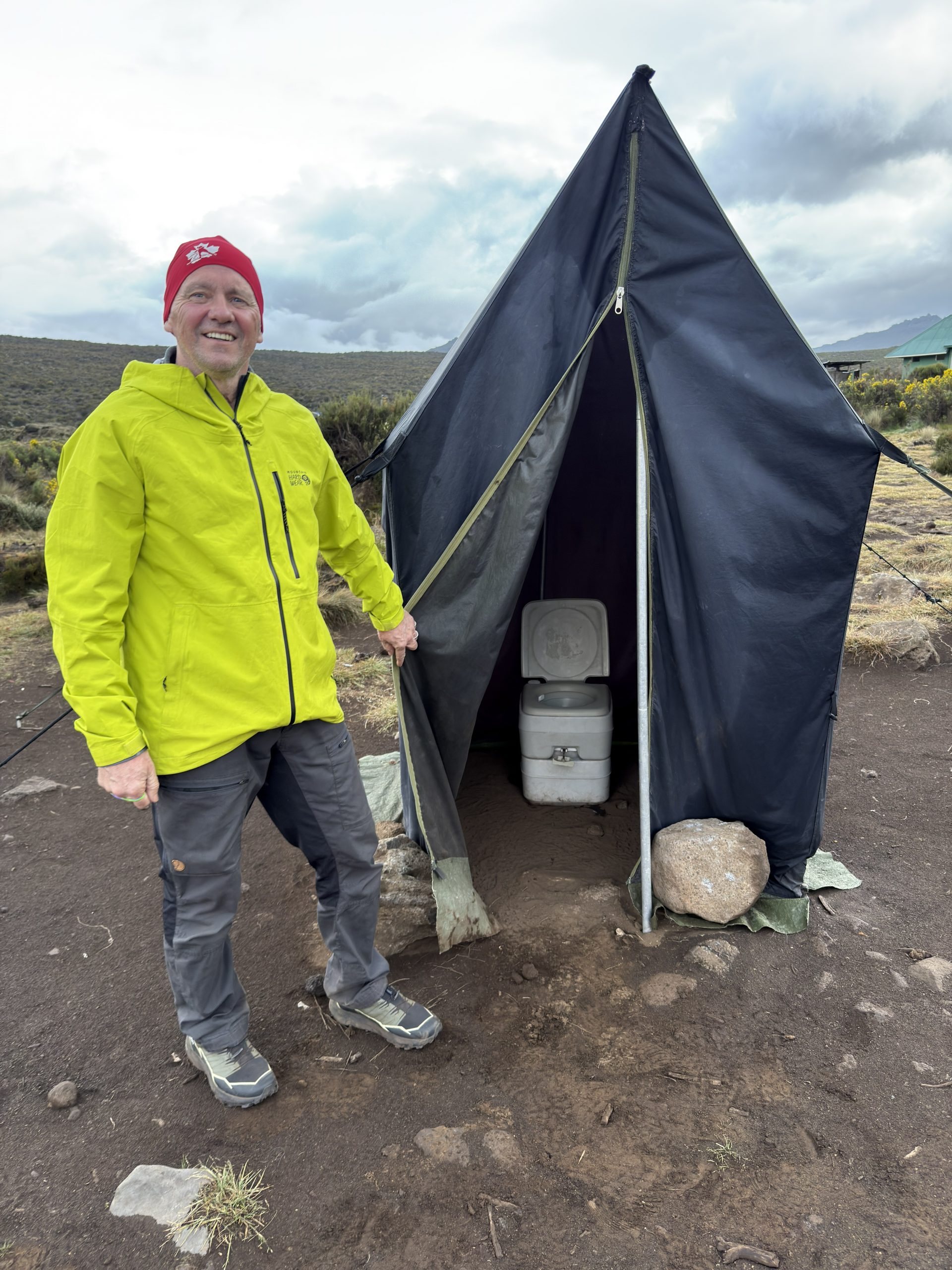
These comforts of home were made possible by the real heroes of Kilimanjaro — our Tanzanian support team. By any measure, they were the ones who truly bore the weight of the mountain on their shoulders. The group consisted of 3 guides, 23 porters, a cook, and a maître d’. Yes, maître d’.
The porters carry the lion’s share of everything that goes up the mountain: tents, food, water, and pots and pans. They also lug clients’ duffel bags, weighing up to 15 kgs. Many porters carry these extra loads on their head, in addition to toting fully loaded backpacks. Countless sport well-worn sneakers instead of sturdy hiking boots. Without them, climbing Kilimanjaro is impossible.
InZania's lead guide, Raymond, rests as porters make their way up the mountain.
With tips that average $10 USD a day, you would be hard pressed to find better, more affordable help. Still, it’s a good wage by Tanzanian standards. With thousands of climbers attempting Kilimanjaro every year, the jobs are a crucial part of Tanzania’s tourism economy, supporting thousands of families. Their gruelling labour allows those of us who pay for the pain and suffering to focus on the physical challenge – long, difficult days of hiking.
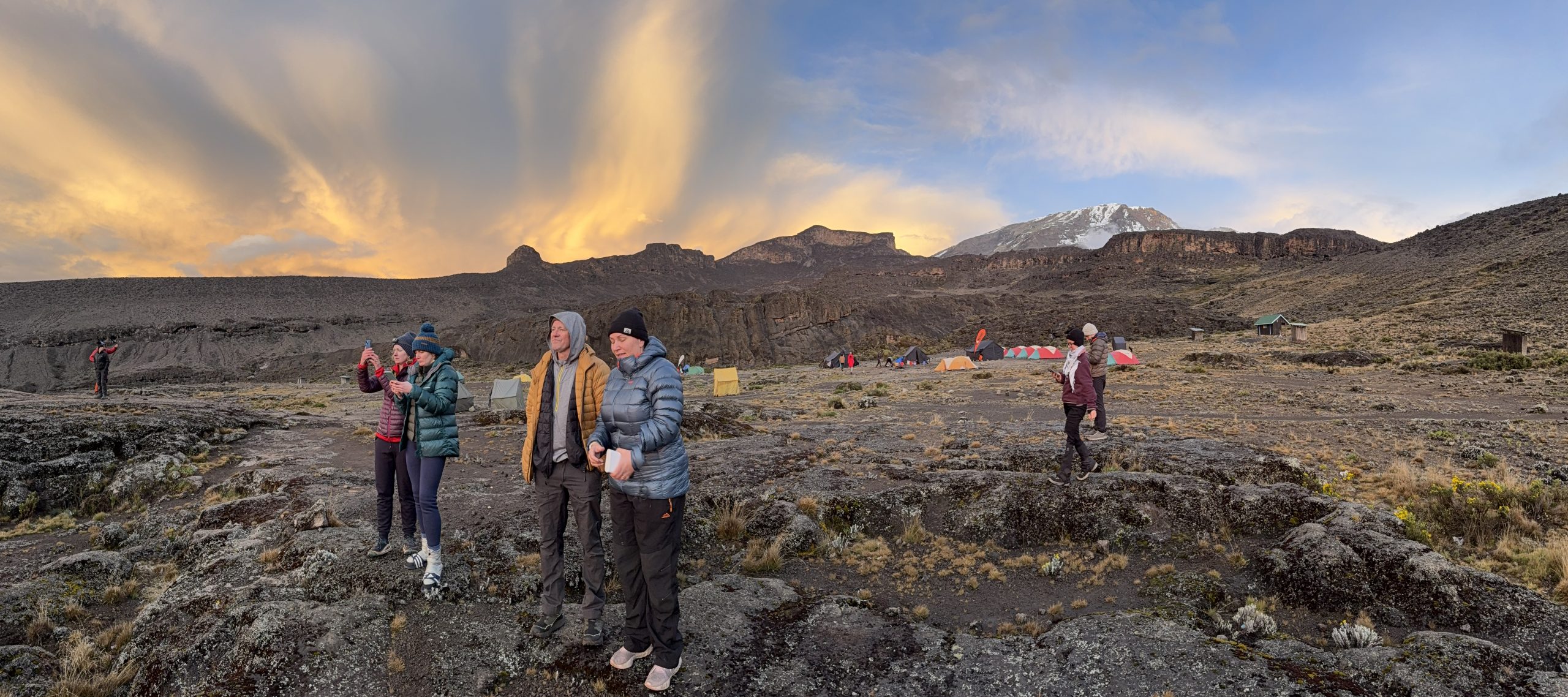
The porters snake across the mountain with grace, pace, and good humour. On the trail, never-ending refrains of “hakuna matata” (no worries) and “jambo, jambo” (hello) fill the air. They were always there to encourage you, especially when you need it most.
You need it most on summit night.
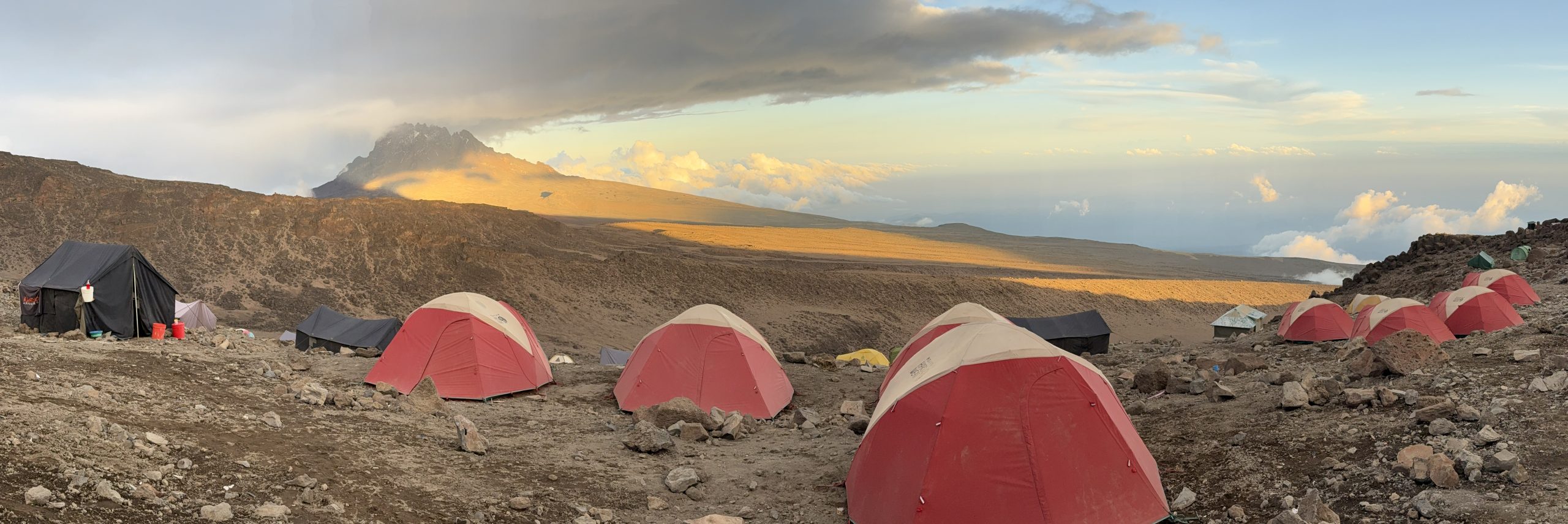
On that joyous evening, you have dinner about 5 p.m., then crawl into your sleeping bag to try to get some sleep before an 11 p.m. wake up call. After attempting a light meal, you pack and layer up, and, about midnight, start climbing into the Kilimanjaroan night.
The eight and a half hours of lumbering up the mountain were the most physically taxing of my life. My only thoughts were to put one foot in front of the other, again and again and again.
Hikers are shilouetted by the rising sun on summit day, March 14, 2025 on Kilimanjaro's eastern flank.
It’s a strange thing, climbing towards a goal you can’t see. You move slowly. You don’t speak because breath is precious. You don’t look up because the top is a lie. You just push forward.
Of all those who stand on Kilimanjaro’s stony crown, a mere one per cent are aged 65, as are Marcel and myself. For six and a half days, like two senior citizens possessed, we willed ourselves upward, until, at 8:20 a.m., the summit was ours.
I had imagined tears and a euphoric, cinematic release. I pictured Marcel and I sobbing, locked in a bro-embrace, manically laughing in oxygen-deprived triumph.
Asselin and Campbell make the last push for the summit with other members of InZania.
But there was no rush of emotion. No epiphany. No existential clarity. No fireworks. No symphonic crescendo. Just that weathered sign and the thin, cold air.
We took a few photos and then we turned around and headed back down.
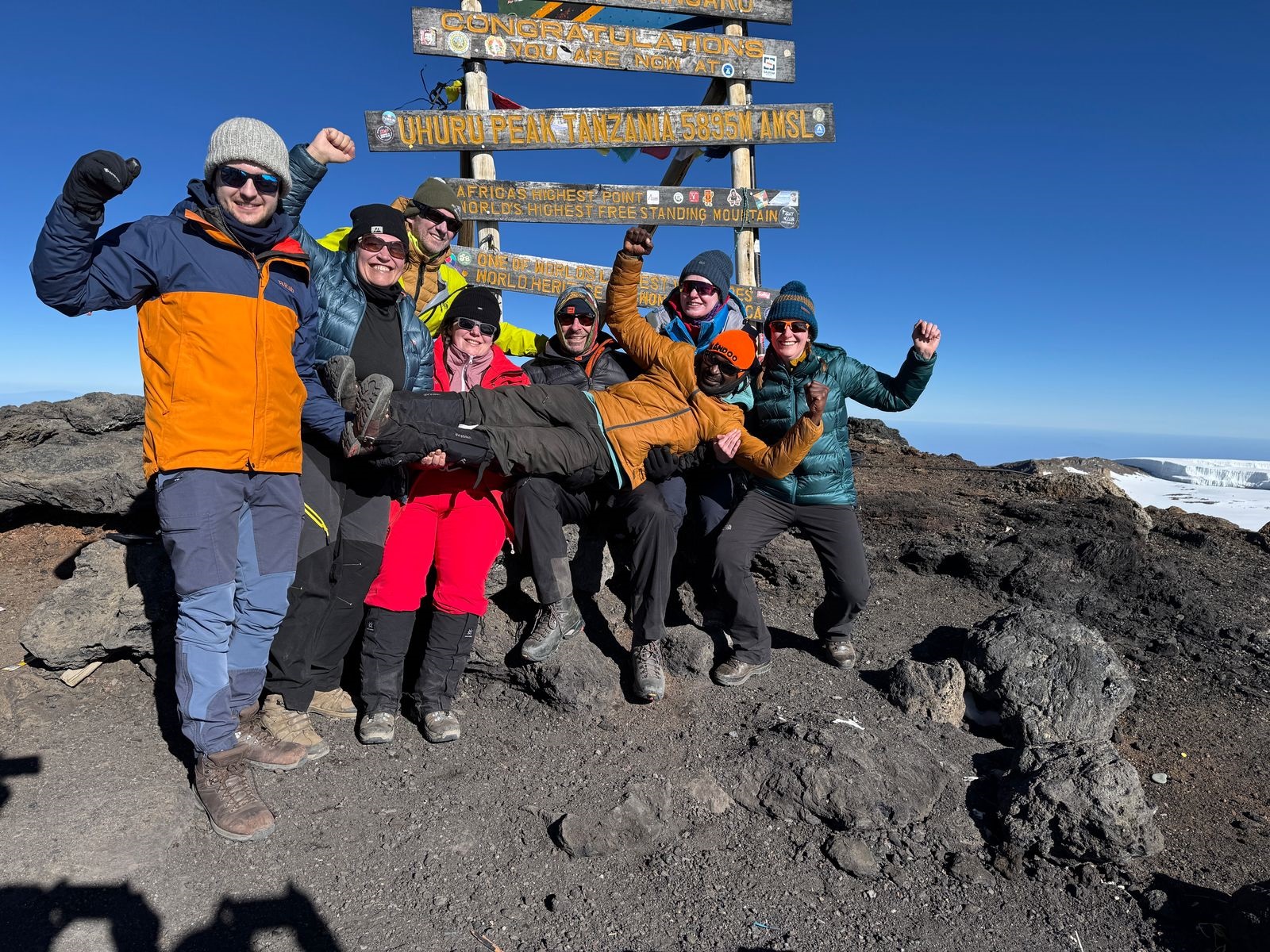
That was that.
So what was the point of all this? Was it life altering?
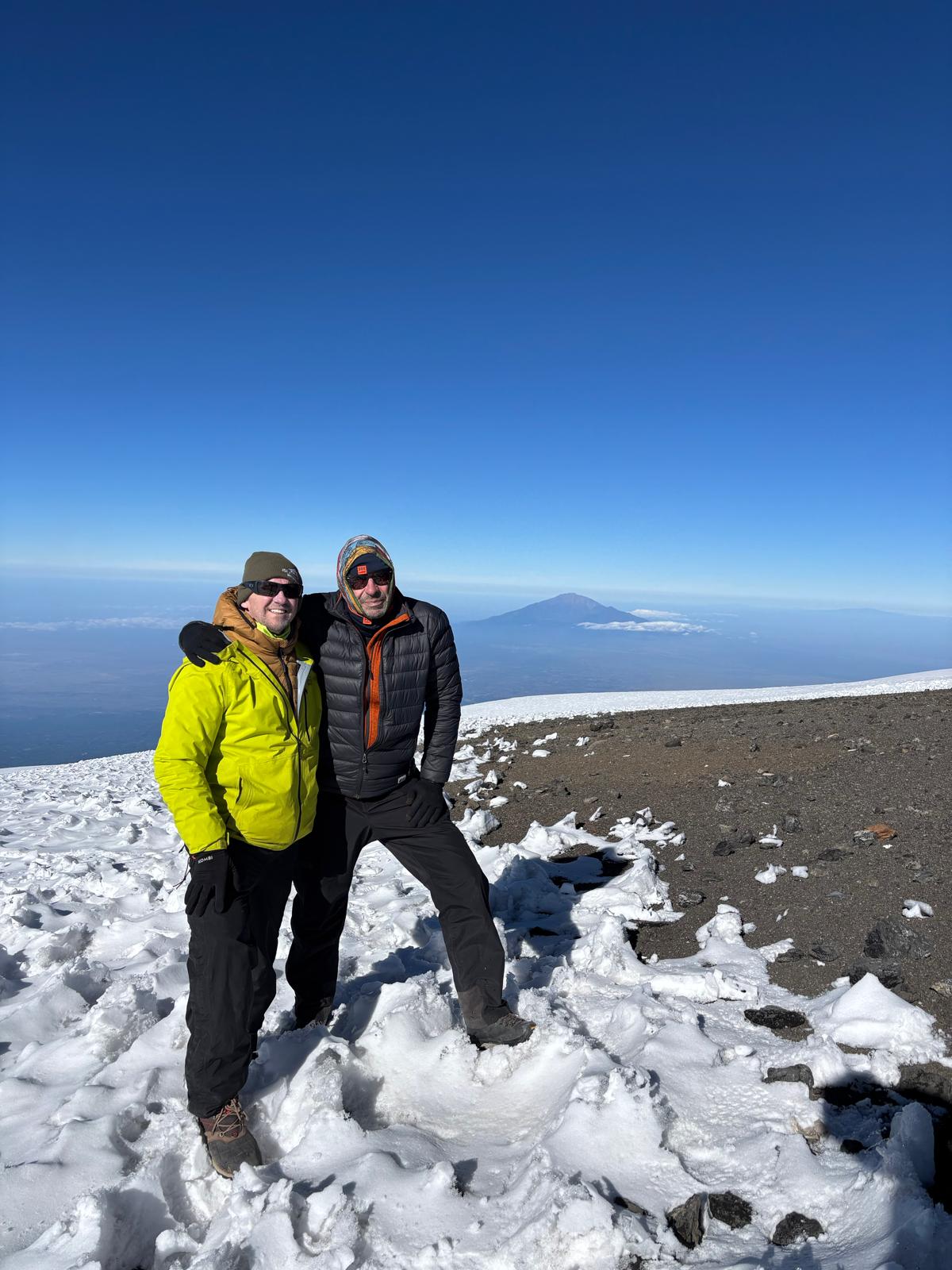
No, not in any grand, spiritual way. The summit didn’t reveal hidden truths or erase my idiosyncrasies. The mountain didn’t whisper to me or answer any of life’s secrets. But it confirmed what I already suspected: that effort matters, that friendships deepen in shared silence, that it’s better not to wait on things.
It’s easy to mythologize, to make things bigger than they are. The summit isn’t the point. The point is the journey. The struggle shared with others. The laughter and tears. The victories, together.
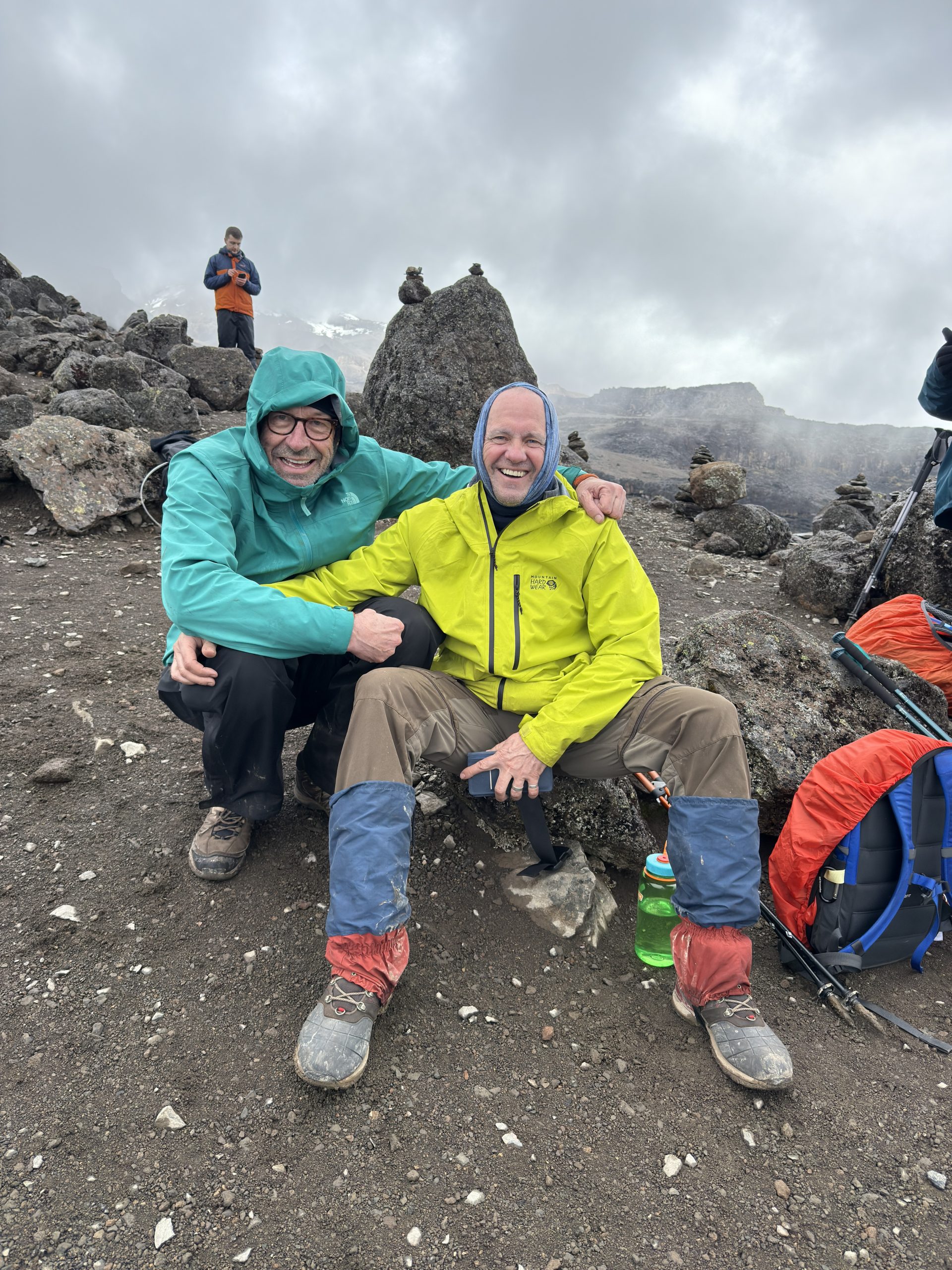
Mountains don’t change you. They just give you a better vantage point to see who you already are.
Standing on the summit, I didn’t feel heroic. I felt small and tired. Old and grateful. And alive. I thought of my family, my friends, my thighs.
I thought how lucky I was to have a friend like Marcel – and how rare it is, at any age, to move through such intensity with someone who knows of all about your worst and walks beside you anyway.
The sign at the top of Kilimanjaro reads: Congratulations. You are now at Uhuru Peak, Tanzania, 5,895 M.
I think what it really says is this: You are here. You climbed. You endured. You succeeded. You remembered what it feels like to live.
Mountains make poor therapists. They don’t listen. They don’t advise. They don’t heal. But they’re excellent mirrors. They reflect on those things you bring to life’s dance: your baggage, your ego, your regrets, your aspirations.
Then they hand it all back to you in a mixing bowl.
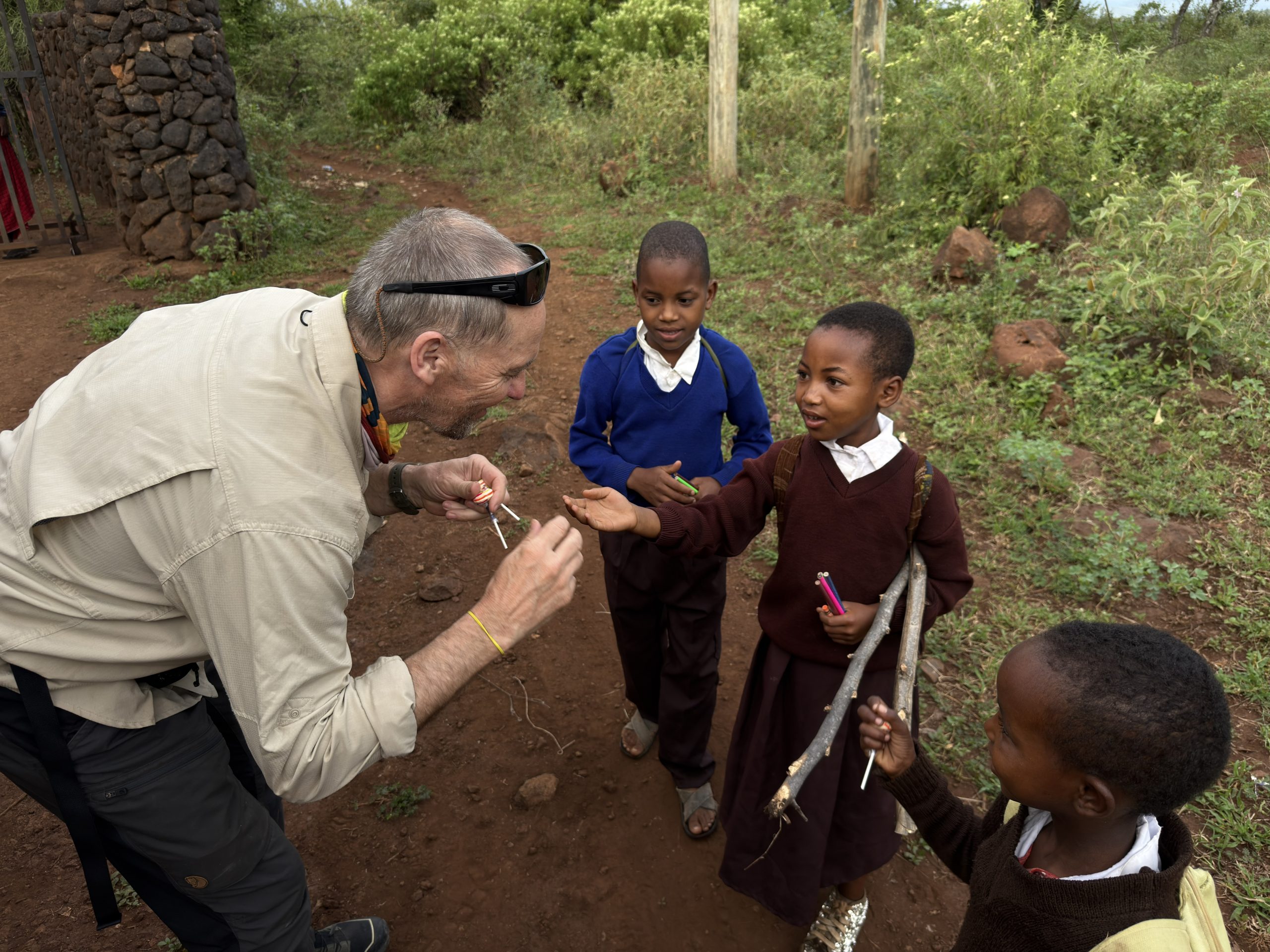
I returned home with a few simple truths.
That shared hardship nurtures connection. That altitude is no match for laughter. That you’re never too old to do something foolish and challenging with a friend.
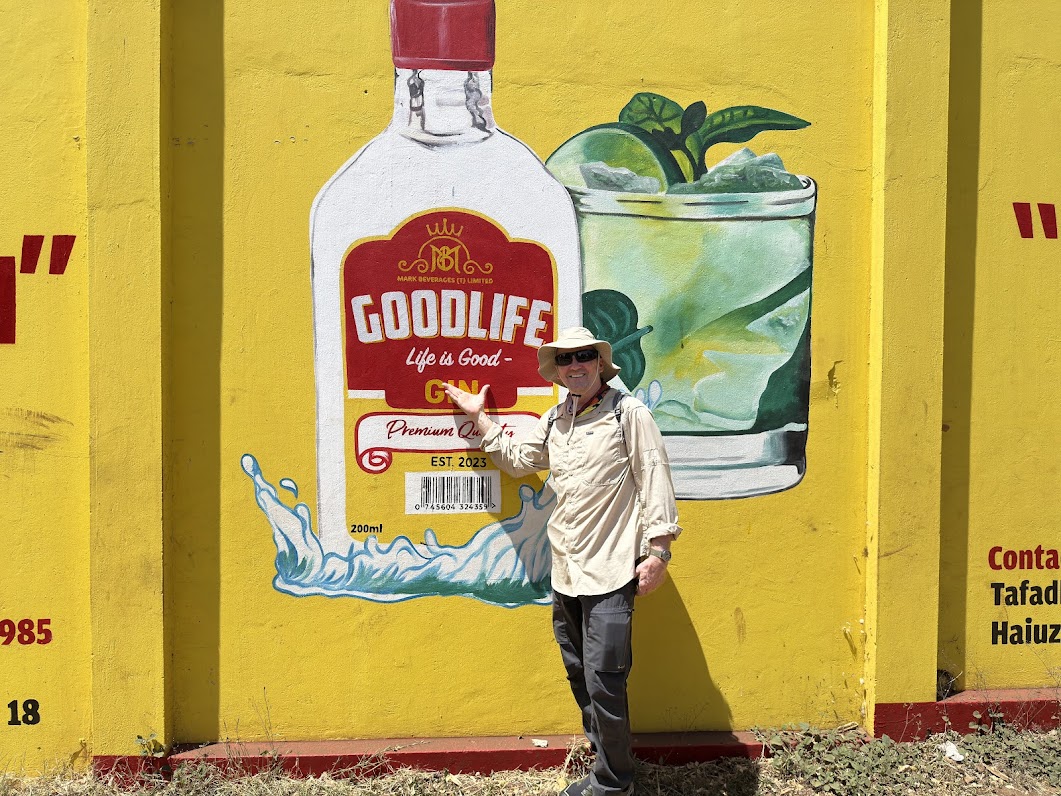
Maybe carpe diem isn’t about seizing anything. Maybe it’s just about showing up. About saying yes. About lacing up your boots at midnight, turning on your headlamp, and plodding upward with a friend who’s been closer to you than you know for 45 years.
Marcel and I recently got together for a few beers and some gloriously exaggerated recollections of our Kilimanjaro climb. Then, between sips of India Pale Ale, he dropped it on me.
“You want to trek to Everest Base Camp with me next year? I couldn't imagine doing it with anyone but you.”

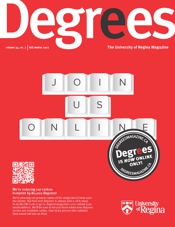

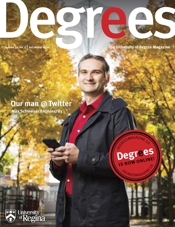


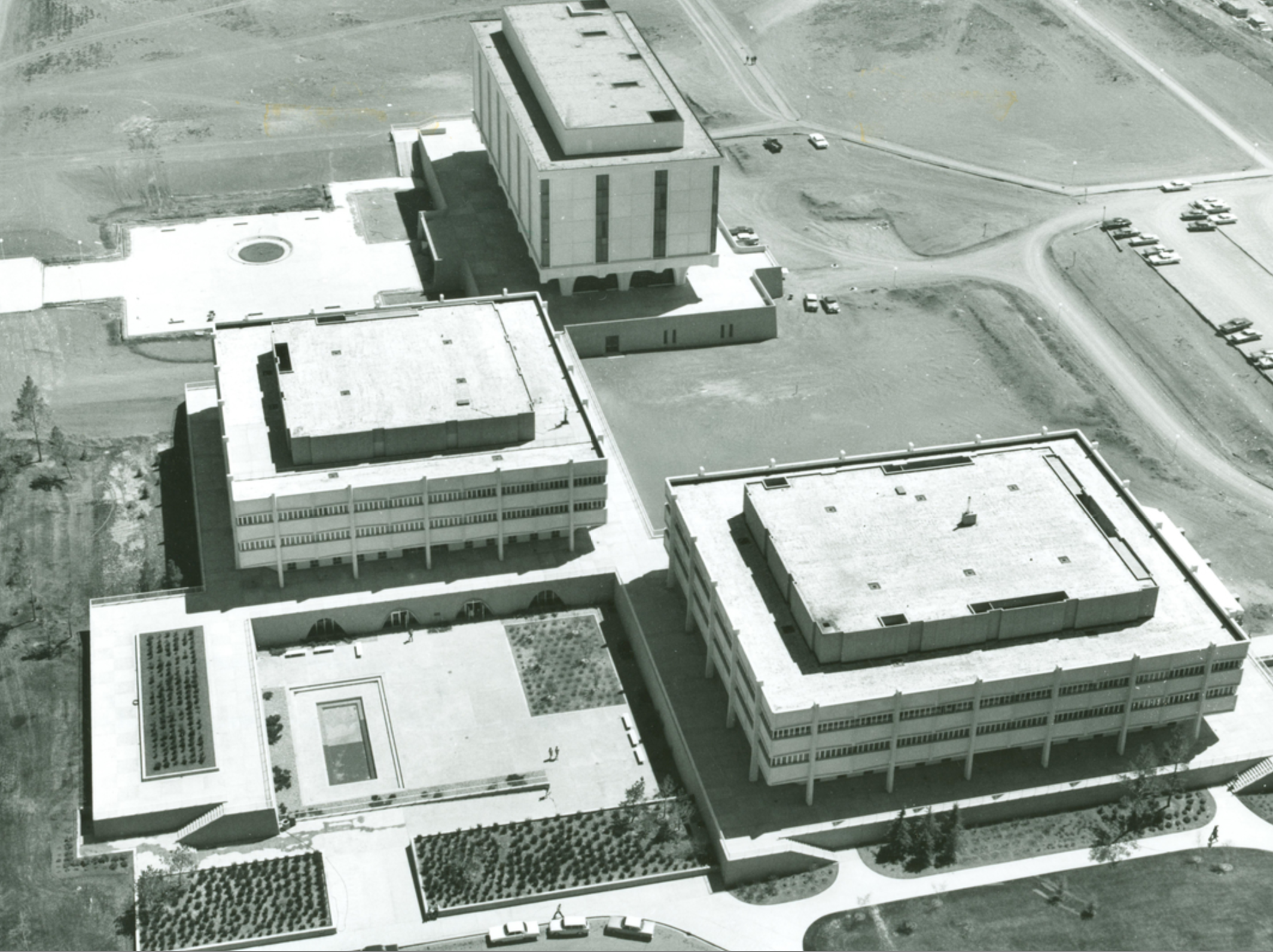 Minoru Yamasaki's original three buildings on the new Regina Main Campus.
Minoru Yamasaki's original three buildings on the new Regina Main Campus.
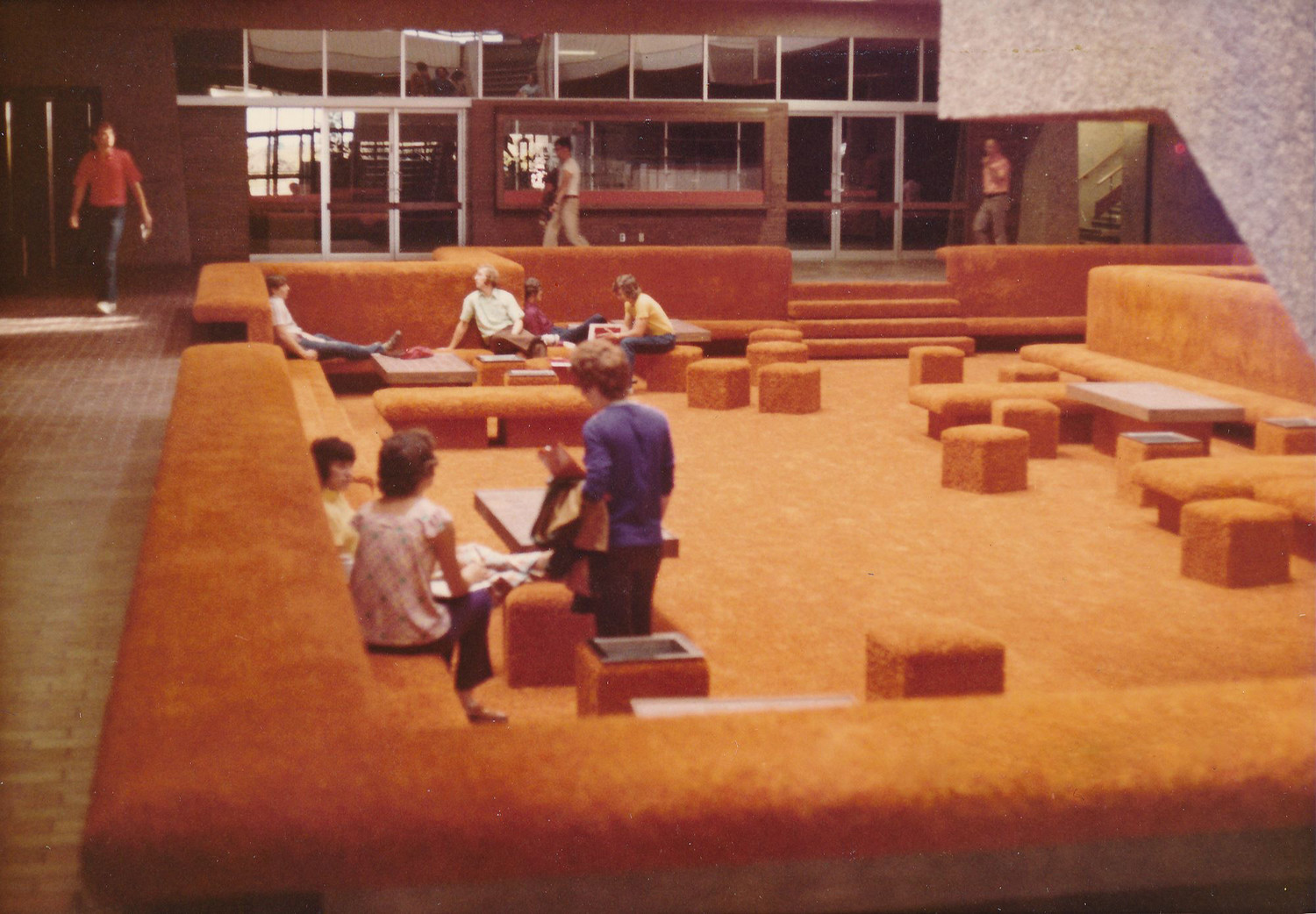 A view of the original Conversation Pit in the AdHum Building, 1974.
A view of the original Conversation Pit in the AdHum Building, 1974.
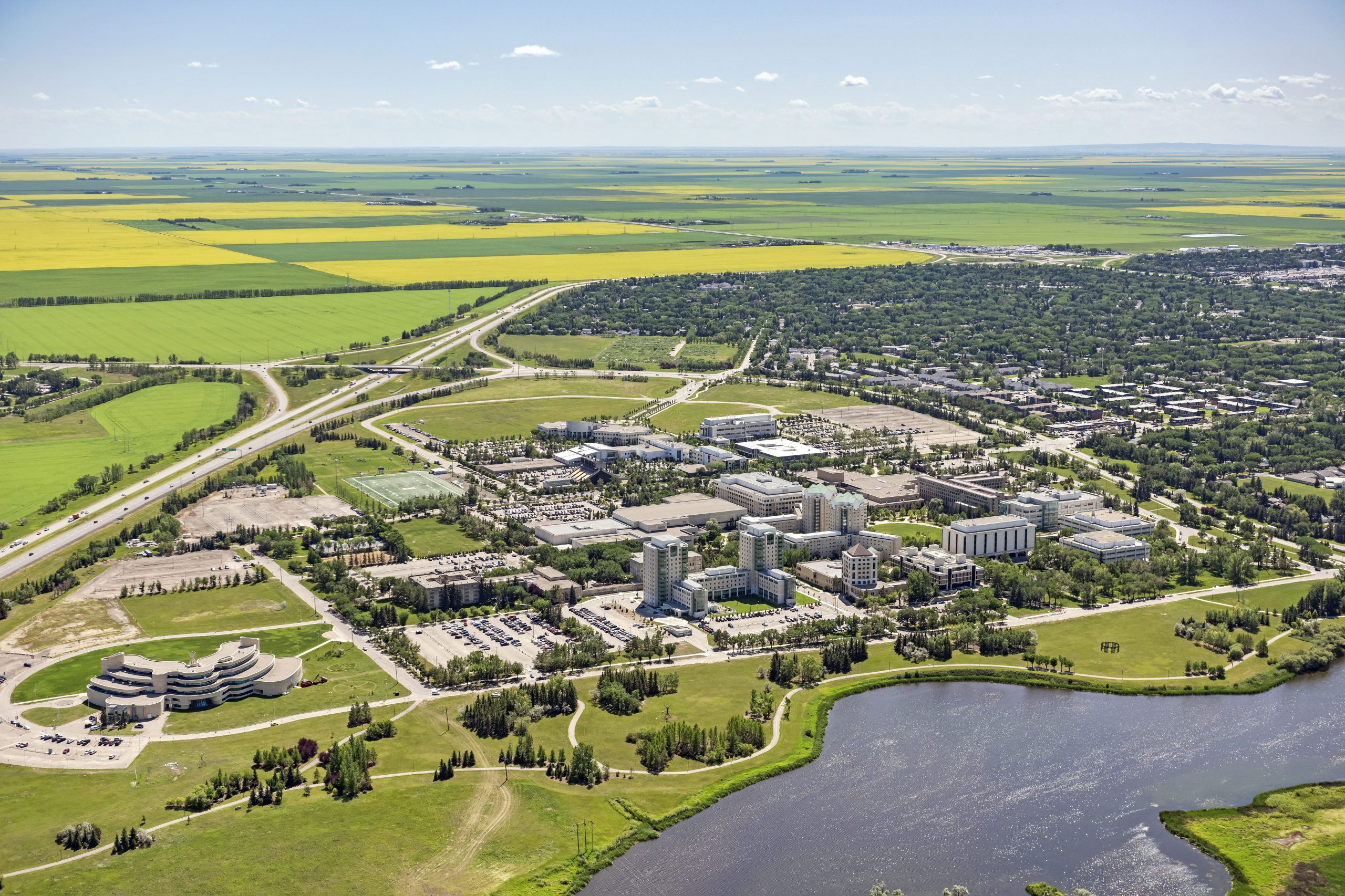 Aerial view of the University of Regina Main Campus present day
Photo: Trevor Hopkin, U of R Photography Department
Aerial view of the University of Regina Main Campus present day
Photo: Trevor Hopkin, U of R Photography Department
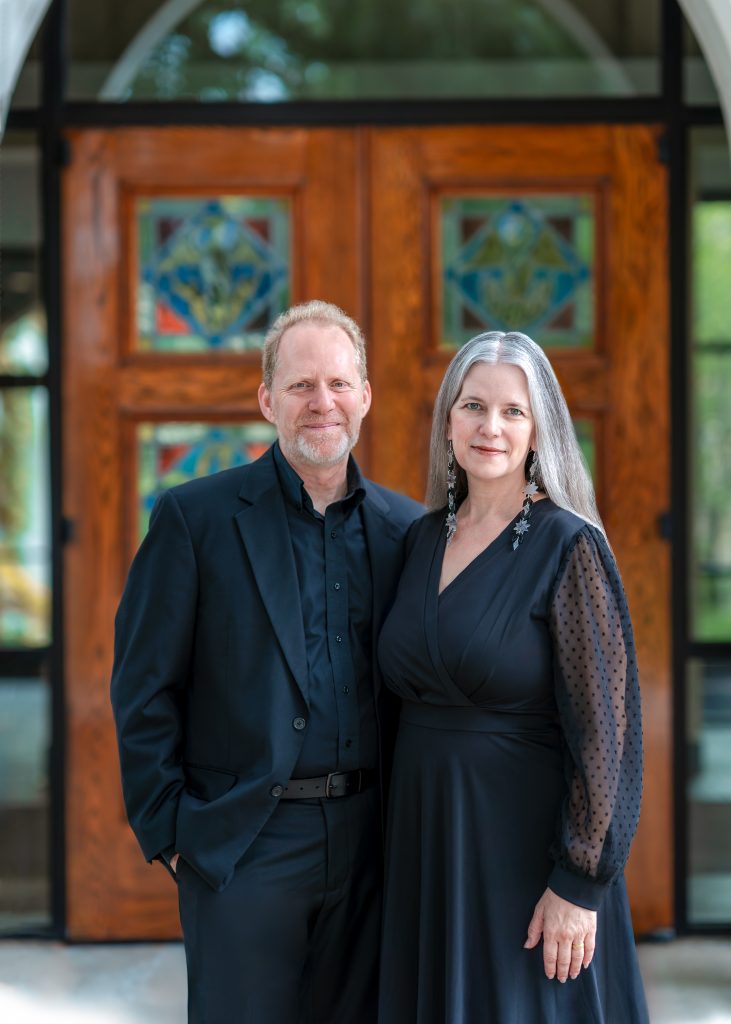 A recent headshot of Brett and Krista, taken by Krista DeVaul.
[post_title] => If Music Be the Food of Love, Play on: An Interview with Krista Cornish Scott, BMus'97 (Distinction) and Dr. Brett Scott, MMus'96
[post_excerpt] =>
[post_status] => publish
[comment_status] => open
[ping_status] => open
[post_password] =>
[post_name] => if-music-be-the-food-of-love-play-on-copy
[to_ping] =>
[pinged] =>
[post_modified] => 2025-07-17 09:48:40
[post_modified_gmt] => 2025-07-17 15:48:40
[post_content_filtered] =>
[post_parent] => 0
[guid] => https://www.degreesmagazine.ca/?p=9572
[menu_order] => 0
[post_type] => post
[post_mime_type] =>
[comment_count] => 0
[filter] => raw
)
A recent headshot of Brett and Krista, taken by Krista DeVaul.
[post_title] => If Music Be the Food of Love, Play on: An Interview with Krista Cornish Scott, BMus'97 (Distinction) and Dr. Brett Scott, MMus'96
[post_excerpt] =>
[post_status] => publish
[comment_status] => open
[ping_status] => open
[post_password] =>
[post_name] => if-music-be-the-food-of-love-play-on-copy
[to_ping] =>
[pinged] =>
[post_modified] => 2025-07-17 09:48:40
[post_modified_gmt] => 2025-07-17 15:48:40
[post_content_filtered] =>
[post_parent] => 0
[guid] => https://www.degreesmagazine.ca/?p=9572
[menu_order] => 0
[post_type] => post
[post_mime_type] =>
[comment_count] => 0
[filter] => raw
)